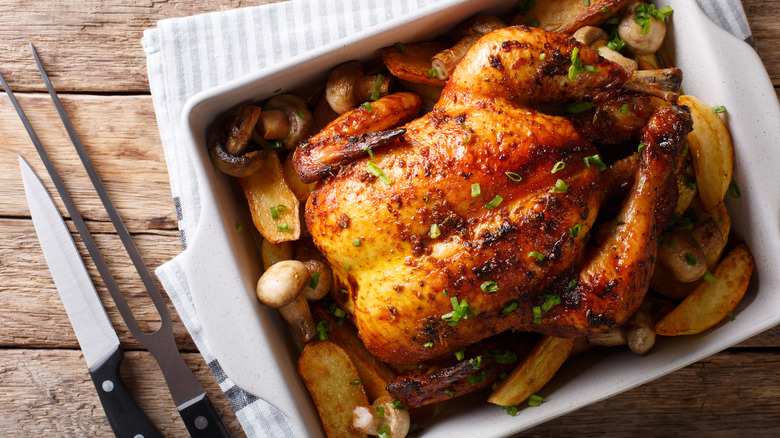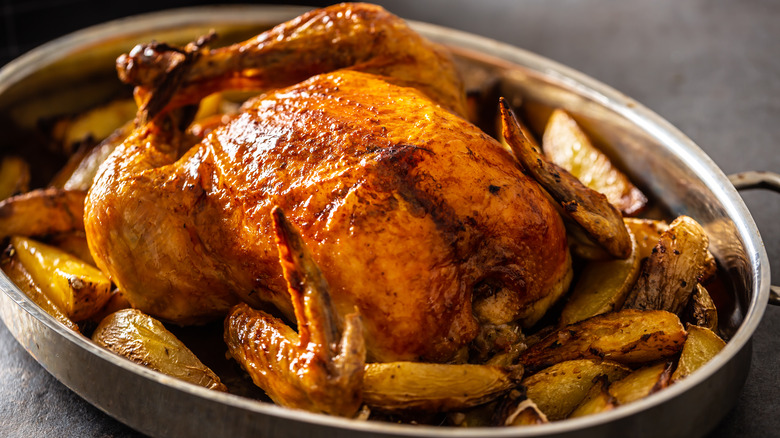You Should Start Slow-Roasting Chicken. Here's Why
Homey, satisfying, and delicious, roast chicken is the poultry equivalent of a warm hug. Comfort food at its finest, the dish is typically easy to prepare — as long as you've got a hot oven, salt, and a roasting pan — and has the rare ability, among chicken dishes, to be both visually stunning as well as olfactorily tantalizing, filling the home with the unbeatable aroma of sizzling fat and herbs. It's also extremely adaptable to different palates and preferences and can be accented with fresh or dried herbs, fresh citrus, vegetables, or even fruits and nuts (via Delicious).
Here at Tasting Table, we can admit to an abiding love of roast chicken, and we've got recipes for roast chicken with chickpeas and kale, Julia Child's roast chicken, and herb roasted chicken to prove it. One thing all those recipes have in common is a super-hot oven — above 400 degrees Fahrenheit in all three cases — which helps ensure delectably crispy skin. But did you know that you can roast chicken low and slow, a technique that boasts its own set of advantages?
Slow-roasted chicken turns out extremely tender and evenly cooked
When we think of roasting, we think of a blazing-hot oven; the term "baking" seems to imply the same idea but at a lower temperature. That's pretty much the difference between the two terms, confirms Bob's Red Mill: Roasting utilizes temperatures of 400 degrees or higher and produces more markedly browned meats, vegetables, and other items, while baking implies a temperature of 375 degrees or lower. Especially with a whole chicken, we tend to go for a high-heat roast to cook the meat through and to crisp up the skin.
But Bon Appétit makes a solid case for slow-roasting (or baking) a whole chicken to achieve extraordinarily tender results. Noting that "crispy skin isn't the end game of roast chicken." The outlet writes that baking a whole chicken at 300 degrees for two and a half hours produces a result that's fall-apart tender and incredibly moist. The low, slow heat of the oven helps cook the meat very evenly, whereas a roasted bird can sometimes end up with dry white meat by the time the dark meat has cooked through. The slow-roasting method means both will turn out tender, and although the skin won't be crispy, it's a fair tradeoff for some of the most succulent meat you've ever tasted.
So the next time you're craving roast chicken, try low and slow and enjoy an extra-tender take on the classic.

